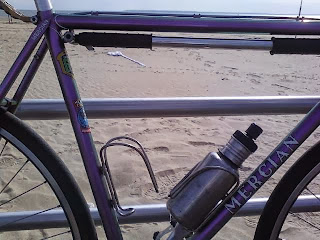I got a kick out of this photo.
Do you think Bell or Giro will use it in their ad campaigns? What about Bern?
 |
| From University Bicycles |
Do you think Bell or Giro will use it in their ad campaigns? What about Bern?
































